Russian Blue Cat: This Striking Robust Cat Could Be Your Companion for 15 to 20 Years
This breed is long-lived thanks to general good health and a lack of genetic problems. Some have even lived to 25 years. What's more, they are exceptionally devoted to their people, have fine bones, and firm muscles. But they do love food and will eat themselves into oblivion.

STORY AT-A-GLANCE
- The Russian Blue cat, sometimes called the Archangel Blue, is a naturally occurring breed that probably originated in the Archangel Isles in northern Russia
- Russian Blues have a striking look with their plush, shimmering blue coat and beautifully shaped, vivid green eyes. Russians are medium-sized cats, but appear bigger due to their double coats
- This breed is extremely affectionate and loyal to their humans, but is extra shy with strangers. Russians very much need a consistent and predictable daily routine — these kitties don’t handle change well
- The Russian Blue is a genetically healthy breed, with an average lifespan of 15 to 20 years. These kitties do have a tendency to overeat, so it’s very important to feed measured, portion-controlled meals to avoid obesity and weight-related disease
- If you’re considering a Russian Blue for your family, please check your local shelters and rescues first, along with Petfinder
Editor's Note: This article is a reprint. It was originally published February 21, 2015.
The Russian Blue Is Sometimes Called the Archangel Blue
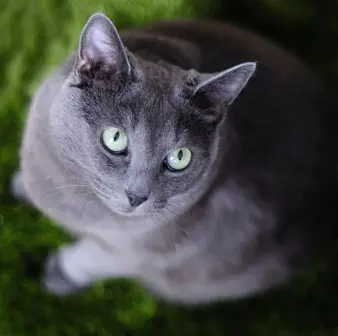
The history of the Russian Blue is a bit of a mystery. Many believe this cat is a natural breed that may have originated in the Archangel Isles in northern Russia, thus the breed’s unofficial name, Archangel Blue. The long Russian winters may have contributed to the cat’s thick, dense coat.
It is thought sailors transported Russian Blues to Great Britain and Northern Europe in the 1860s. The first reported appearance of the breed outside Russia was in 1875 at the Crystal Palace in England, where it was introduced as the Archangel Cat.
Russian Blues Have a Very Striking Appearance
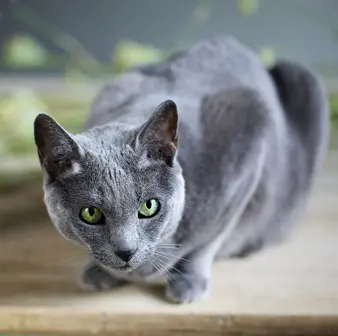
The Russian Blue has a short, double coat that is silky and plush to the touch. The undercoat is soft and the same length as the guard hairs (top layer of fur). The coat color is distinctly blue, and each guard hair has a silvery sheen. The tail has dull stripes that are almost unnoticeable. Despite their lush coat, Russians aren’t huge shedders.
As if her coat wasn’t enough to set her apart, the Russian Blue also has bright green eyes. Kittens have yellow eyes, and at about four months a green ring develops around the pupil. As the kitty matures, the eye color gradually turns a bright, vivid green, which is quite eye-catching against the blue coat.
The Russian Blue Has a Sweet, Expressive Face
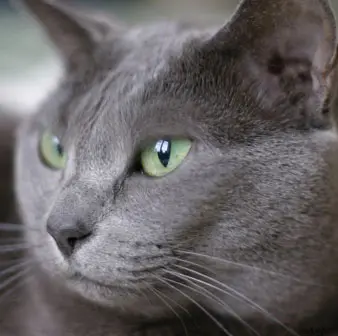
This breed’s eyes are large, wide-set and round. They turn up just slightly at the upper corners, giving the Russian Blue a sweet expression to go with his sweet-natured temperament. The Russian’s mouth is also slightly upturned at the corners, which makes him appear to be smiling.
The Russian Blue Is a Fine-Boned, yet Robust Breed
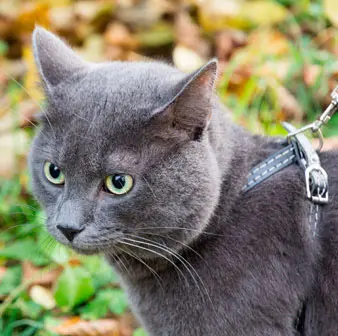
Russian Blues are fine-boned and firmly muscled. Their bodies are long, slender, and elegant. When she’s sitting, the Russian appears to have a short, wide neck thanks to her thick coat and high-set shoulder blades. It’s only when she’s in motion with her body fully extended that you’re able to see that like the rest of her body, her neck is long and graceful. Russian Blues are medium-sized cats, but appear bigger than they are due to their double coat.
Russian Blues Are Devoted Companions
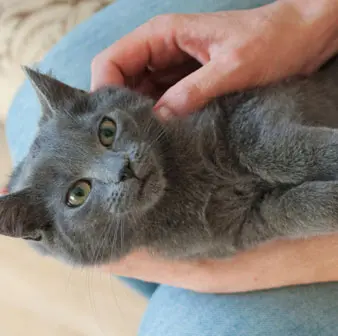
Russians make great companions for their humans. They get along well with children, and are known to respond to human emotions in interesting ways, for example, patting their human’s face or clowning to change the mood.
Russian Blues are biddable and easy to get along with — just don’t ignore her or you’ll hurt her feline feelings. Russians are playful, and many enjoy a game of fetch or chasing after toys.
Russians Are Notoriously Shy Around Strangers
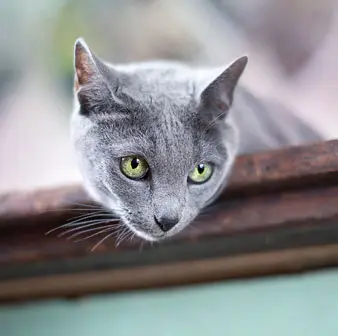
This breed is naturally shy and nervous around strangers and in unfamiliar settings. The flip side of the coin is these kitties are independent and able to entertain themselves nicely if left home alone during the day.
Russians Aren’t Big on Change
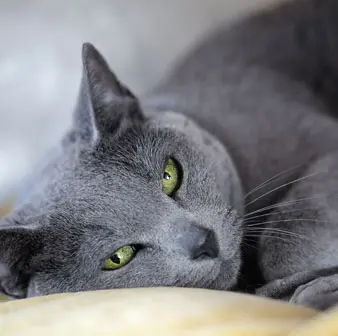
Like all cats, Russians thrive in familiar surroundings and need a consistent daily schedule. This breed is especially sensitive to change and greatly prefers things to be routine and predictable. He wants his meals at the same time each day, and is especially fussy about the cleanliness of his litter box. If you upset his routine, you may find your Russian visibly displeased and temperamental.
The Russian Blue Is a Healthy Breed
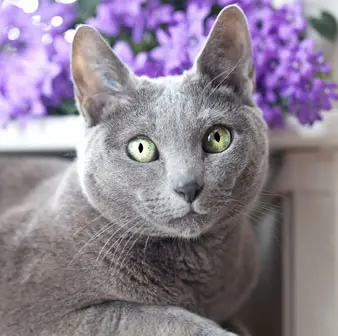
The Russian Blue has no specific health problems and is genetically sound, probably because it is a naturally occurring breed rather than a crossbreed.
However, Russians do love food and will eat themselves into obesity and weight-related disease if allowed to. It’s especially important with this breed to serve precisely measured, portion-controlled, species-appropriate meals at the same time each day.
Your Russian Blue will enjoy regular brushing of her coat, which needs to be cleaned of any dead hair and skin oils distributed so that it maintains its amazing sheen. Her teeth should also be brushed several times a week to prevent plaque buildup and gum disease.
The Average Life Expectancy of a Russian Blue Is 15 to 20 Years
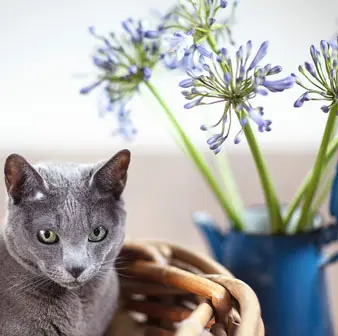
This breed is long-lived thanks to general good health and a lack of genetic problems. Some Russians have even lived to 25 years. Average adult weight is from 7.5 to 15.5 pounds. Males are typically larger than females.
If you’re thinking about adding a Russian Blue kitty to your family, please check your local shelter and rescue organizations first for adoptable Russians. Also check out the Petfinder Russian Blue page.
Fun Fact About Russian Blues
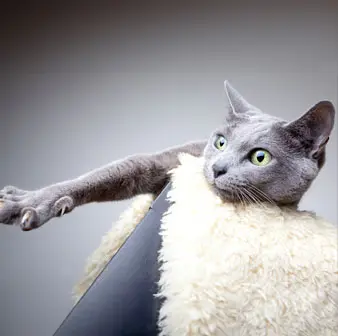
Rumor has it that Tom of the cartoon cat duo Tom and Jerry is a Russian Blue due to the color of his coat.











